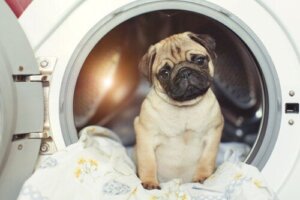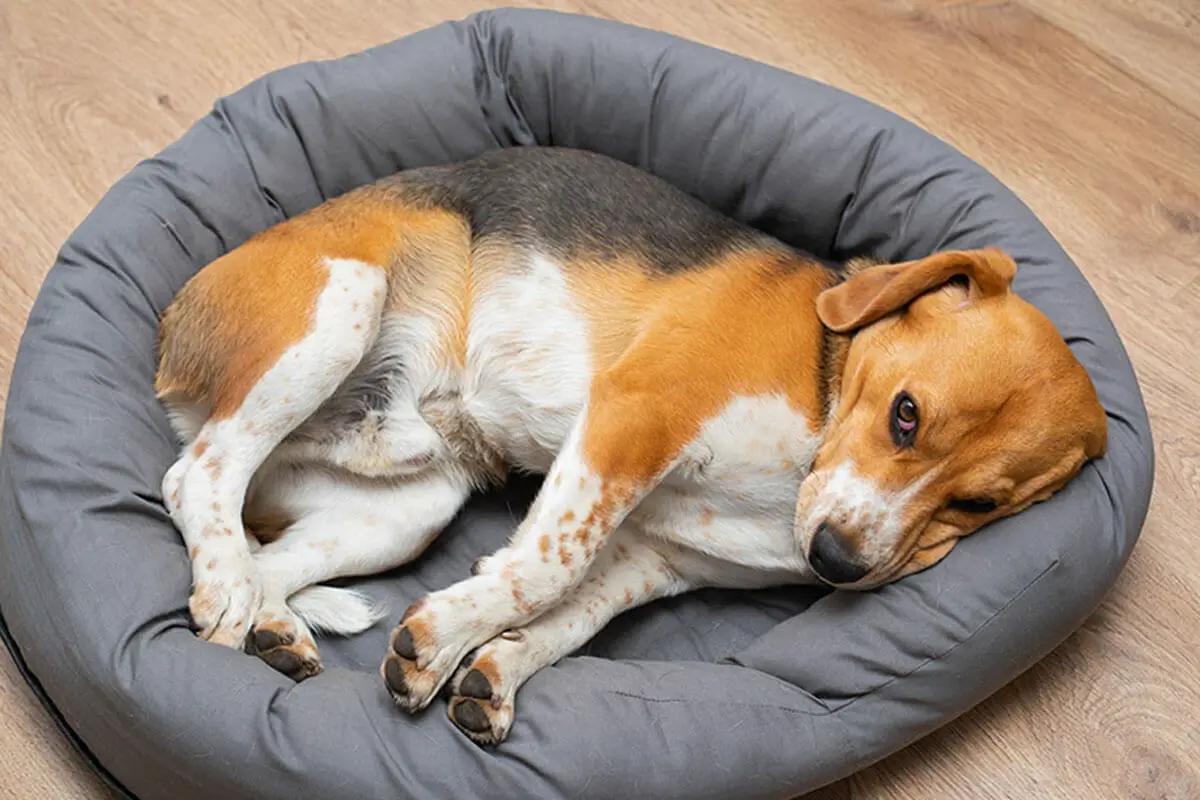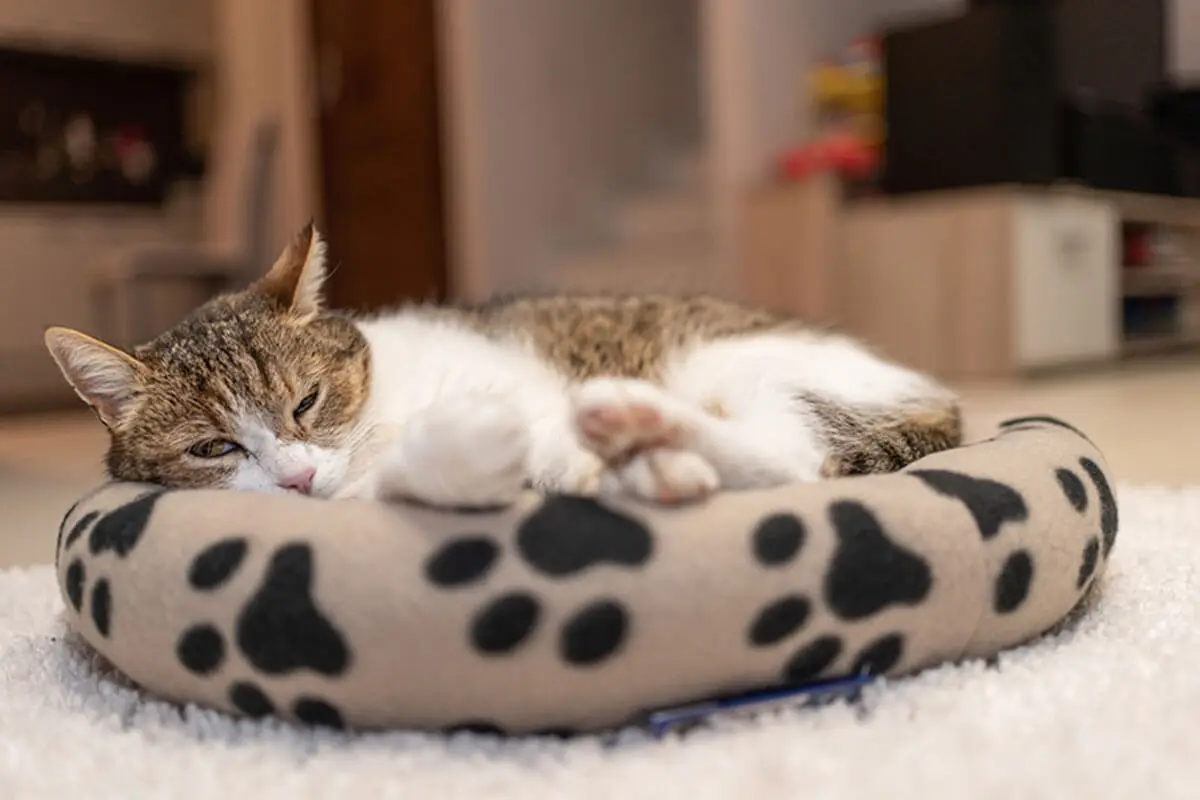5 Tips to Safely Clean and Disinfect Pet Bedding

Cleaning pet bedding is very important. This is because it’s his or her resting place and, like yours, it’s appropriate that it’s always spotless and your pet can enjoy a clean and safe environment.
However, it’s not as easy as changing the sheets of our own bed. Thus, you have to spend some extra time to make sure to eliminate possible microorganisms that affect your pet’s health.
Added to this is the difficulty of the shape. Dog beds are usually large and made of rigid materials that make it difficult to put them in the washing machine, for example.
In any case, in this article, we will clear those doubts and show you how to clean this element in a simple but very efficient way. Keep reading!
Tips to clean and disinfect pet bedding
Your pet’s bed should always be clean and disinfected. This process should be done more frequently, compared to the times you bathe it, which is usually every month.
Well, it is not recommended to wait 30 days or more to clean the resting place. This is because hair, dead skin, toys, food remains and even fleas and ticks accumulate there. All of this could be detrimental to your pet’s health and yours, so it’s best to prevent it with constant cleaning.
1. Pet bedding: Clean up hair accumulation
Regardless of whether your pet is a dog or a cat, in his bed there will always be a trail of hair, dust and even food debris. The main thing is to avoid the accumulation of these debris that could trigger the presence of bacteria and that, when washing the bed, make the task more difficult.
To eliminate all this you can use a vacuum cleaner, which you should also pass through the bed, under it and in the area where you place it. It is also achieved by using a lint roller or any other similar element.

2. Disassemble the bedding to clean the parts separately
After cleaning the bedding of debris, you need to disassemble it. It is important to wash the textiles such as covers and blankets, apart from the mattress foam.
After this step, start cleaning the stains from the cover. You have the option to do it with a stain remover product and a toothbrush, or you can put it in the washing machine with the rest of the textiles, if they are easy stains.
For the disinfection of these elements check the washing recommendations label. If it is allowed, wash with hot water, add the products you always use, and add a little baking soda. This last item helps to remove stains, disinfect and deodorize.
3. Pet bedding: wash the foam
Many people avoid washing their pet’s foam bedding for fear of damaging it. The fear is real. Not doing this process right could leave your pet without a mattress. However, there are ways to do it right:
- First option: this is for those fillings that are fairly stiff and that state on their label that they are machine washable. This means that it is a resistant material that will not be damaged, so the only thing left to do is to put the mattress in the machine. Add a little vinegar as well.
- Second option: for mattresses made with pieces of foam, which could lose their shape and get damaged, there is a trick that has taken over social networks. It has to do with the use of a tennis ball. It is enough to put the foams in the washing machine, add cleaning products and place two or three tennis balls inside. This way, the foam does not lose its volume.
4. Let the pet bedding dry very well
The fourth tip to efficiently wash your pet’s bed has to do with drying. The most advisable thing to do is not to put the foam in the dryer, since it could be damaged. Therefore, place the stuffing in an area of the house where it can dry naturally.
Air dry the rest of the pieces so that they do not shrink and then you will have problems when reassembling the bed. This is also important as humidity could generate bad odors, fungus in the textiles and skin problems for the pet (such as Malassezia mycosis).
5. Be very careful with the products you use
We conclude these tips for cleaning and disinfecting your pet’s bedding by inviting you to be especially careful with the products you use in the process. Only you know your dog or cat and how sensitive its skin is. Finally, if you have detected that it is prone to develop allergies, it is best to opt for products created for these cases.
There are a number of soaps or detergents that are pet friendly. Another option, as mentioned in previous points, is to prefer homemade products such as white vinegar or baking soda, which are efficient in disinfecting and deodorizing and do not cause discomfort to pets.
In any case, you should know that it is vital to rinse with plenty of water. Sometimes, allergies occur because the soap or the products used remain impregnated to the garments.

A clean bed equals a happy pet!
You will notice that after washing your pet’s bed, she will be happy and you can be calm. Dedicate some of your time to this task, at least once a month. In addition to a clean pet bedding, this is a way to control possible pests, such as fleas and ticks.
All cited sources were thoroughly reviewed by our team to ensure their quality, reliability, currency, and validity. The bibliography of this article was considered reliable and of academic or scientific accuracy.
- Bajwa, J. (2017). Canine Malassezia dermatitis. The Canadian Veterinary Journal, 58(10), 1119.
- Desachy, F. (2018). Los cuidados del perro día a día. Parkstone International.
- Kale, A., & Gaspari, A. A. (2021). A dog lover’s dilemma: airborne allergic contact dermatitis to tylosin. JAAD Case Reports, 7, 100-102.
This text is provided for informational purposes only and does not replace consultation with a professional. If in doubt, consult your specialist.








